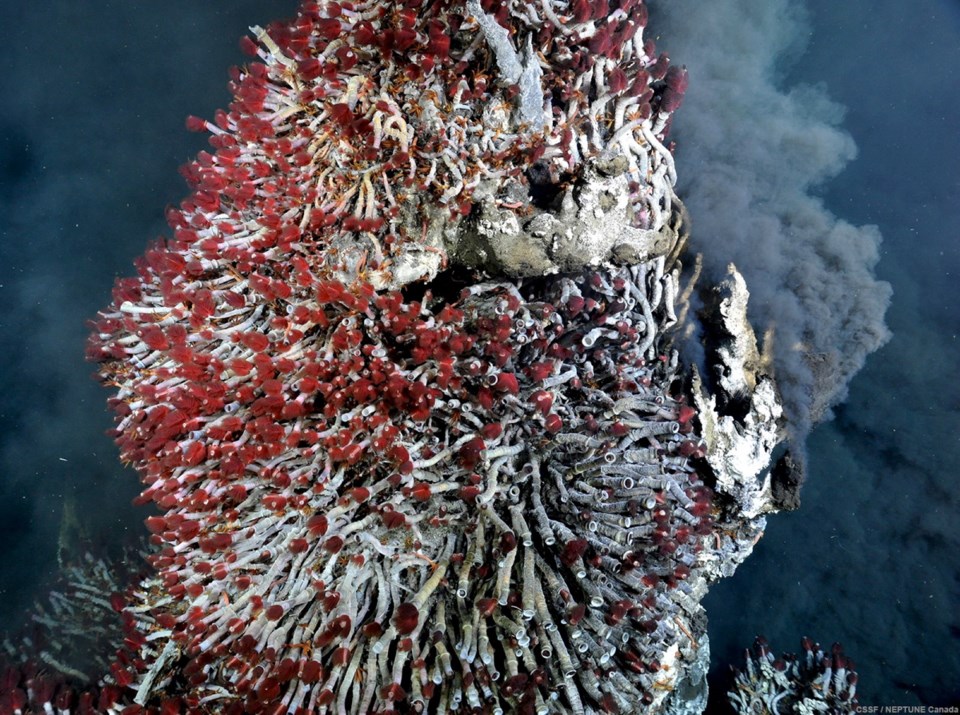Armchair scientists are in for a treat as live video of plumes of black smoke, billowing up through towering mineral chimneys in the deep reaches of the ocean off Vancouver Island, are streamed by the latest NEPTUNE expedition.
The research vessel Thomas G Thompson, with scientists from the University of Victoria-led Ocean Networks Canada and other international organizations, is at the Endeavour Hot Vents, 250 kilometres off the coast of Vancouver Island.
The vents, 2,200 metres below the surface of the ocean, exist in a strange volcanic landscape, where a wealth of specially adapted creatures — including colonies of giant tube worms — thrive in the hot water.
The aim is to connect the southern group of “black smokers” to instruments along NEPTUNE’s cabled undersea observatory. The underwater activity will be filmed by a remotely operated submarine.
Scientists, engineers and educators will also be sharing their experiences through live audio and video and through tweets, blogs and video highlights on the Wiring the Abyss 2013 website.
“It is the first time the southern field has been connected to the network,” said Kim Juniper, science director for Ocean Networks Canada.
The area is particularly interesting because the chemical makeup of the fluids is different from other vents and has a high iron content.
“Then the really spectacular stuff is the black smoke,” he said.
Very hot lava occasionally erupts from the vents, underwater volcanos at the western edge of the Juan de Fuca tectonic plate, Juniper said.
“You get seawater that percolates into the rock and then it gets heated up to hundreds of degrees Celsius when it gets close to the hot lava,” he said.
“It gets so hot it starts to dissolve the rock, so when it comes out it’s no longer sea water — it’s seawater plus dissolved rock, and that is what makes this black smoke.”
The new instruments will measure temperatures around the black smokers and collect seismographic information.
“These volcanic ridges that wrap around the Earth, under the sea, like seams on a baseball, are where we form new Earth’s crust by underwater volcanic eruption,” Juniper said. “It starts the whole movement of plate tectonics and is really behind why we have earthquakes.”
Scientists will also be studying the influence that chemicals from the vents have on the ocean.
However, for many, the fascination of the mysterious region are the creatures that thrive in the hot, chemical laden atmosphere.
“The big tube worms are the most dominant creatures,” Juniper said, likening the thickets of worms to waist-high forests.
> For more information, go to oceannetworks.ca/cruise13/index.dot.



